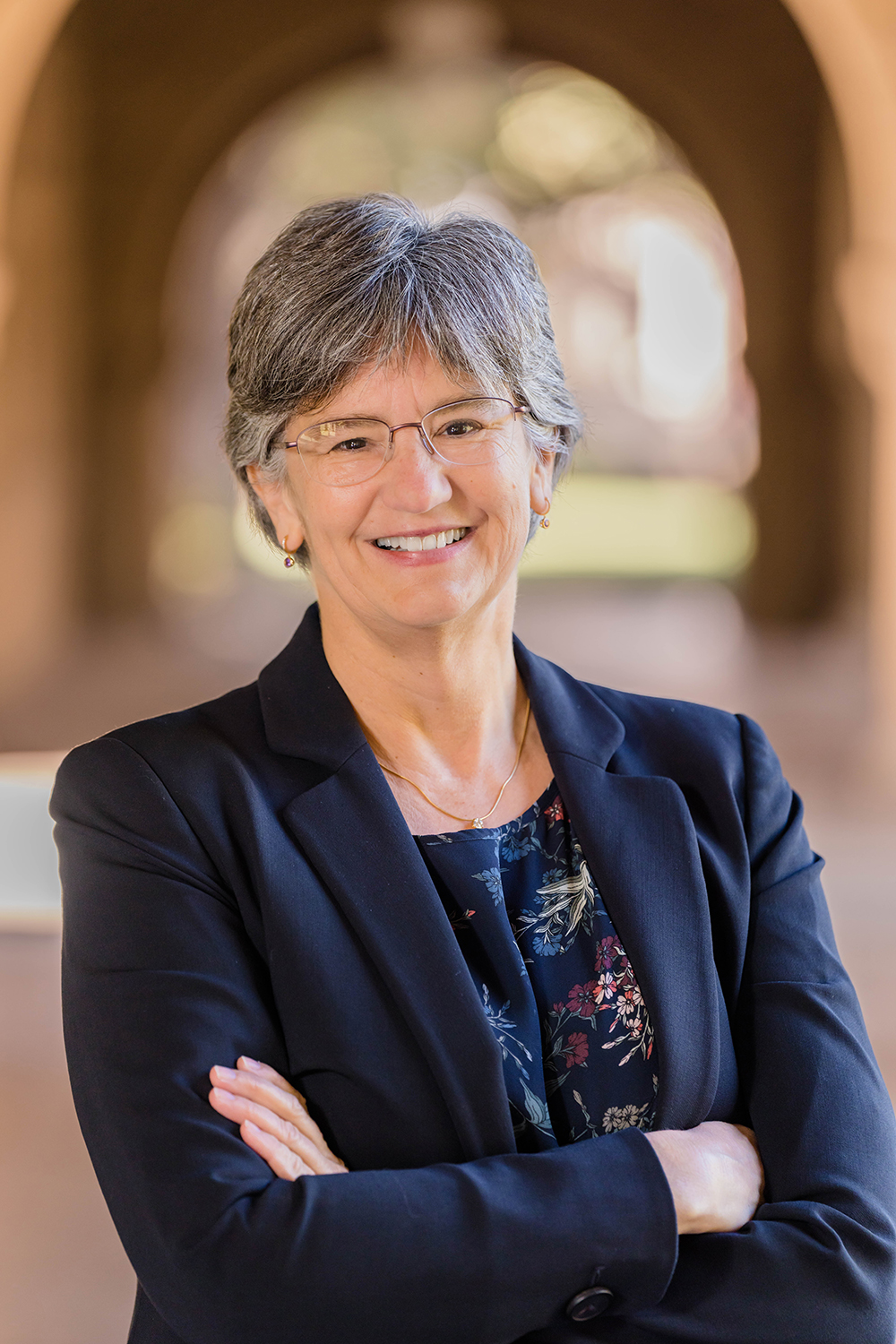Kam Moler to step down as vice provost and dean of research to return to teaching and research
Shared resources for research and team scholarship expanded under Moler's leadership, along with a heightened focus on research integrity and compliance.
After five years in the role, Kathryn A. “Kam” Moler will return to the lab and classroom at the end of her term as vice provost and dean of research (VPDoR) on August 31.
Moler will return to research and teaching as the Marvin Chodorow Professor in the departments of Applied Physics, Physics, and Energy Science and Engineering. The decision to dedicate her intellect and passion full time to research and teaching is inspired by progress on quantum materials that will enable experiments that weren’t previously possible, the timeliness of developing curricula for decision-making in sustainable energy, and the opportunity to bring her analytical skills to governmental advisory roles.
“I’m deeply grateful for the honor and the priceless experience of serving as a leader at Stanford in several roles,” Moler said. “I’ve loved the job, but right now, there are some experiments I want to do with my students. It’s really that simple. During the next few years, I want to focus on being a laboratory scientist, a teacher, and a scholar.”
A search committee for Moler’s successor is being formed in consultation with the Faculty Senate and will be chaired by Provost Persis Drell.
Under Moler’s leadership, the Office of the VPDoR focused on supporting the 15 independent academic research institutes, centers, and laboratories, which span the life sciences, physical sciences, social sciences, humanities, and engineering. She also built the capacity of her teams to support the entire research community, including establishing the Research Development Office to support faculty seeking sponsored research funding.
Moler also orchestrated a faculty-driven vision for investments in shared research platforms, resulting in over $50 million for new instrumentation, data, and computation resource upgrades. In addition, under her leadership, Stanford has placed greater strategic emphasis on the institutional programs that boost openness and transparency in research, safeguard international collaborations, and protect human subjects and researchers through programs in the offices of Environmental Health and Safety, Research Policy and Integrity, Technology Licensing, Research Compliance, and Research Administration.
“Stanford has been fortunate to benefit from Kam’s leadership, her deeply principled approach to supporting the research enterprise, and her tenacity and drive to improve the research ecosystem for our faculty,” said Drell. “She institutionalized changes in the Office of the Vice Provost and Dean of Research to benefit all of us, including her successors, long into the future. She was a steady hand during the pandemic to ensure we were able to keep research moving forward productively, despite the many restrictions. And, she was an essential force in developing the blueprint for our new school of sustainability and shepherding its early launch as interim dean. Throughout, Kam has brought her formidable energy and enthusiasm to advancing a bold global model for scholarship and research to change the world.”
During her tenure, Moler promulgated solutions that integrated innovation with productivity and effectiveness to advance four priorities: research excellence, collaboration, infrastructure, and ethics. The focus on these priorities yielded positive impacts in all seven schools as well as SLAC National Accelerator Laboratory. Moler also championed maintaining and improving connections between Stanford, SLAC, and the Department of Energy, resulting in significant investments in people and facilities in service not only to Stanford researchers but to the country.
“The researchers at Stanford are strategic and creative,” Moler emphasized. “It’s important to help people secure research funding and ensure they have access to fabrication facilities, characterization tools, synthesis facilities, data repositories, and computing facilities. Minimizing their formidable administrative burdens – internal and external – is equally important. We need to keep designing 21st-century universities so that researchers don’t have any barriers to forming interdisciplinary teams or pursuing their best, most creative ideas.”
Before returning to research, Moler will focus on a university-wide strategy for supporting AI, data science, and computation. Building upon the incredible progress in computational ability and data science and the growing appetite for AI research in academia and society, it is an opportune time to map out concrete next steps.
When asked about this priority, Moler emphasized that there is a readiness to launch this next stage of research with a key objective of supporting faculty with the talent, software, hardware, and expertise to reach transformative levels. Stanford is well positioned with a strategic brain trust across the campus – from the Computer Science and Statistics departments to the Stanford Research Computing Center, the Stanford Institute for Human-Centered Artificial Intelligence (HAI), the Stanford Data Sciences initiative, and the excellence in many departments.
“Every day I’m in this role, I’m all in,” Moler said. “It has been an honor to witness the communal spirit between faculty and staff working together to implement innovative paths that elevate our research enterprise. At Stanford, we care about discoveries that benefit society, we care about new knowledge for its own sake, and we care about other humans. This culture of care reminds us to focus on what matters: the willingness to find solutions together.”
